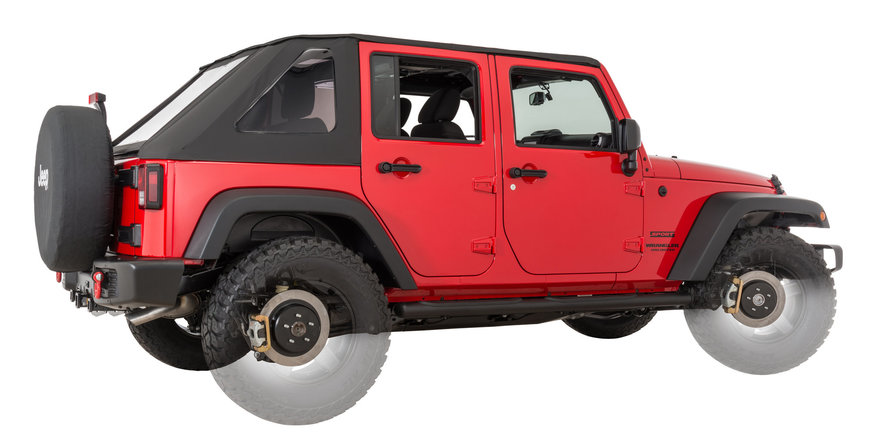by Terry Pritchard
Torque Staff Writer
Part Three of a Series
In winter, I plot and plan. In spring, I move. - Henry Rollins
____
When you move, you eventually need to stop. So think of the brakes installed on your Jeep as your first line of defense when it comes to safety. After all, they are really the only acceptable thing to stop the vehicle when needed. The emergency brake is not all that practical and will not effectively stop a heavily built Jeep in full motion.
So, after the long, cold and sometimes messy winter, one of the first things to check on your Jeep this spring should be its brakes — especially if the whole system is becoming a little long in the tooth.
Some signs are obvious when brakes begin to fail such as a burning odor from the front or rear brake area, squealing or screeching when braking, grinding noise when the brakes are applied, pulsation or vibrating in the steering wheel or brake pedal, mushy brake pedal, the Jeep pulling to one side while braking and the old reliable brake light illuminating on your dash. Some things are less noticeable like brake pad wear or thickness.
Failure is not always the only sign brake maintenance or repair is necessary. Did you recently upgrade to larger tires and wider wheels, or install heavy items like new bumpers, cargo racks, or side bars? These kinds of upgrades can put more strain on your factory brake components and go a long way to reducing your stopping power.
Additionally, check the vehicle’s brake fluid level. Your Jeep's brake fluid level should be between the minimum and maximum lines on the reservoir. If low, add more fluid and check for leaks. Having the correct amount of fluid allows the system to push that fluid through the brake lines to each caliper — allowing the pads to be pushed against the rotors to stop or slow down the vehicle.

As part of your normal maintenance routine, Jeep recommends inspecting your pads starting around 20,000 miles and then paying closer attention to rotors at about 70,000, but, you really should inspect them every time you rotate your tires.
Keep in mind that these recommendations are just recommendations as there are other factors that can necessitate earlier inspection. If the vehicle is a daily driver and you always seem to be in stop-and-go traffic, then those pads will most likely wear down faster. The same thing applies if you are a frequent off-roader. Sometimes obstacles such as water fording can impact rotors as well.
Normal maintenance could just require a changing of the pads and most performance frequently come in a semi-metallic or ceramic composition. Each has its strengths and you can match your driving and braking needs to the material of choice.
Whether you’ve added those larger tires and other heavier items, or it is just time for a change, Powerstop Brake Performance Kits are an excellent upgrade over the factory components. These aftermarket kits include all-new ceramic-coated brake pads that help reduce brake dust and wear over time, while adding much-needed stopping power. The kit’s beefier rotors are machined and balanced to exactly fit your Jeep and are drilled — as well as slotted — to reduce warping and heat.
These kits come in daily driver, sport, or extreme packages so there are plenty of options depending on how you drive.
Maintaining your Jeep's brakes is an essential part of ensuring your vehicle's safety and performance. The brake system plays a critical role in stopping your Jeep, and regular maintenance can help prevent costly repairs and ensure your brakes are always functioning correctly.





















